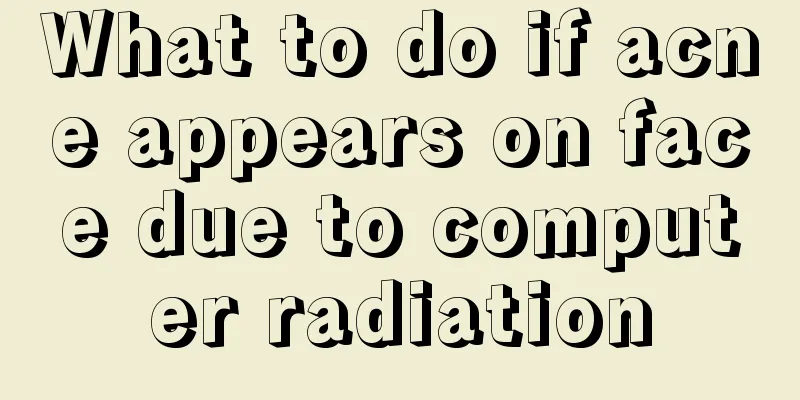What's wrong with the pain on the left side of my stomach?

|
Abdominal pain is a common disease in daily life. There are many causes of abdominal pain, such as acute and chronic gastroenteritis, intestinal obstruction, ulcer perforation, and many gynecological diseases can also cause abdominal pain, such as common ovarian cysts, cervicitis, pelvic inflammatory disease, etc. Abdominal pain can be divided into acute and chronic. If it is chronic abdominal pain, the cause can be checked and treated, but acute abdominal pain is dangerous and needs to be diagnosed and treated as soon as possible. Generally, when people experience acute pain in the right abdomen, they will think of common diseases such as appendicitis and gallstones. So what does pain in the left abdomen mean? This also requires analysis from the physiological structure of the entire abdomen. Some pain in the right organs can also cause pain in the left side of the abdomen. Let's take a detailed look at it below. Abdominal pain usually refers to pain in the front of the body, from the lower edge of the ribs to the pubic bone. Generally speaking, pain can be divided into two types: dull pain and sharp pain (hernia pain). Dull pain refers to a dull pain, which is mostly caused by pain in organs or internal organs; sharp pain refers to very obvious pain, and the patient can clearly know the location of the pain, which is usually related to obstruction of the duct, such as bile duct stones and intestinal obstruction. In most cases, there is a corresponding relationship between abdominal lesions and the location of abdominal pain. Generally, according to the location of abdominal organs, the abdomen can be divided into four areas with the navel as the center: upper right, lower right, upper left, and lower left. Depending on the location of abdominal pain, it can be divided into upper left abdominal pain, upper right abdominal pain, lower left abdominal pain, lower right abdominal pain and central abdominal pain. If the pain is in the right upper abdomen, you need to consider problems with the liver, gallbladder, bile duct, pancreas, duodenum, right kidney, and right large intestine; if the pain is in the right lower abdomen, you need to consider the cecum, appendix, right ovary and fallopian tube, right ureter, etc. Pain in the upper left abdomen may be caused by the stomach, spleen, pancreas, left kidney, or left large intestine; pain in the lower left abdomen may be caused by the sigmoid colon, left ovary and fallopian tube, left ureter, etc.; if there is pain around the navel, it mainly indicates a small intestine disease. In addition, sometimes there may be widespread pain in the entire abdominal cavity. This is usually caused by inflammation of the peritoneum due to irritation for some reason, such as ulcer perforation, ectopic pregnancy rupture, and internal bleeding. value It should be noted that some abdominal pain will shift with the influence of the lesion. For example, the pain starts in the center of the upper abdomen, gradually moves to the lower right within 24 hours and becomes more and more painful. This is an important sign of appendicitis. The pain was originally in the upper right corner and gradually extends to the bottom of the right rear shoulder blade. This may be a problem with the gallbladder or gallstones. The causes and effects of abdominal pain can be mild or severe. When abdominal pain occurs, in order to accurately understand the cause, patients should pay more attention to the pain condition to facilitate the doctor's diagnosis, including the location of the pain, time, nature of the pain, whether it is accompanied by other symptoms, factors affecting the change of pain, etc. Whether abdominal pain is accompanied by other symptoms is also one of the key points in determining the cause of the disease. For example: diarrhea may be caused by gastrointestinal inflammation; constipation may be caused by fecal obstruction; vomiting should be considered as intestinal obstruction or inflammation; changes in bowel habits may be caused by lesions in the large intestine; jaundice, fever and other symptoms may be caused by bile duct or liver lesions; frequent urination, difficulty urinating, nocturia, etc. should be considered as problems with the bladder or urethra. These different symptoms that appear along with the pain can help to distinguish the true cause of abdominal pain. To sum up, there are many causes of left abdominal pain. We should never generalize abdominal pain. No matter what the cause of the abdominal pain is, we must seek treatment as soon as possible and do a comprehensive and systematic examination to avoid misdiagnosis. We should pay attention to our diet and lifestyle habits, exercise more to improve our physical fitness, and avoid unnecessary abdominal pain. |
>>: How to improve pregnancy rate
Recommend
Is the second recurrence of stage 4 brain cancer serious?
The recurrence of brain cancer is mostly due to t...
How much does it cost to treat cervical cancer
Nowadays, many friends suffering from cervical ca...
Related risk factors of brain tumor
In recent years, the incidence of brain tumors ha...
What are the main symptoms of lung cancer in the early stage? 4 early symptoms of lung cancer, early detection and early treatment
If lung cancer is treated in time, the disease ca...
Which cervical vertebra does the thyroid cartilage lie on?
There are many different bones around the human c...
Early survival rate of liver cancer
It often manifests as nose bleeding, subcutaneous...
How to prevent pituitary tumors in daily life
In recent years, young and middle-aged people hav...
Can overnight bitter melon be eaten
The momordica glycosides and bitter substances co...
How to remove oil stains from clothes
Many friends spend a lot of time on socializing, ...
What is the reason for sweating so much
The reasons for sweating are quite complicated. B...
Winter eye protection rules
Eye care is an issue that everyone needs to pay a...
Is the fetal heart rate of 150 a boy or a girl?
If the fetal heart rate test result is 150, it me...
How to use a toothbrush-shaped foundation brush
A very popular toothbrush-shaped foundation brush...
Will the fetus move when it is asleep?
Around five months of pregnancy, the mother will ...
What are the dietary treatments for cervical cancer?
With the progress of the times, people's livi...









